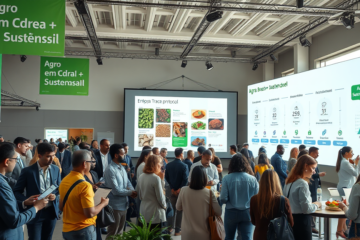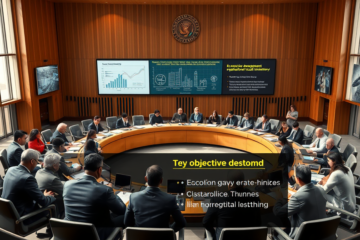Considerable Increase in Retail Coffee Prices
Coffee Prices in retail in the United States are experiencing a significant increase, reflecting a rise of nearly 21% in August.
This phenomenon marks the largest annual growth since October 1997, driven by import tariffs on Brazilian coffee, the main supplier to the US.
In this article, we'll explore the factors driving this price hike, how it compares to Colombian and Vietnamese coffees, and how brands are adjusting to these changes.
Additionally, we will analyze the strategies adopted by coffee chains and large coffee shop chains in response to this economic challenge.
US Retail Coffee Prices Hit Record High in August
US retail coffee prices have seen a jump of almost 21% in August 2023, representing the largest annual increase since 1997.
This remarkable growth is reflected in the difficulties faced by the market, mainly driven by substantial tariffs on imports a href=”https://veja.abril.com.br/economia/tarifas-de-trump-e-escassez-global-levam-preco-do-cafe-nos-eua-ao-maior-nivel-em-quase-30-anos/” alt=”Tarifas e encurtadas global scarcity no café”>reported.
This economic environment has put pressure on coffee chains to adjust their prices to keep up with higher costs.
Annual High: In a historical analysis, the growth of 21% since the same month of the previous year demonstrates how the sector faces unprecedented challenges since the 1990s. This scenario of record highs becomes even more complex with the imposition of high tariffs on imports from important suppliers such as Brazil.
Monthly Variation: Additionally, the monthly increase of 4% compared to July, it is the highest recorded in the last 14 years.
This behavior, captured by the Consumer Price Index, highlights ongoing pressures on supply chains and reflects the direct impact of increased trade tariffs, highlighting the need for strategic adaptations in the coffee sector.
Impact of Tariffs on Coffee Imports from Major Suppliers
The imposition of tariffs of 50% on coffee imports from Brazil had a strong impact on American retail coffee prices.
Brazil, being the main supplier of coffee to the United States, suffered a significant reduction in its exports, directly contributing to the increase in final prices for consumers.
This high percentage tariff makes Brazilian coffee economically unviable for many American importers, who need to look for alternatives in other markets.
Meanwhile, tariffs on Colombian and Vietnamese coffee also influence prices, but to a lesser extent.
Colombia, the second largest exporter, faces a tariff of 10%, which adds an extra cost, but is more manageable compared to Brazilian coffee.
Vietnamese coffee, despite being taxed at 20%, still represents a viable option for importers, resulting in the diversification of coffee sources for the United States.
The following are the rates applied:
- Brazil: 50%
- Colombia: 10%
- Vietnam: 20%
Trade tensions and these tariff policies result in a market where coffee becomes more expensive for American consumers, highlighting the importance of fair international negotiations.
Coffee Brands and Chains' Reaction to Rising Costs
As import tariffs on coffee impact the US market, coffee brands and chains are adopting a variety of strategies to manage rising costs.
Brands are reacting with a direct increase in the prices of consumer products.
Additionally, a New Orleans network has begun applying a additional fee of 4% in physical orders, highlighting a rapid approach to address the immediate problem.
A major coffee shop chain has revealed that its practices advance purchase help smooth out cost fluctuations, keeping the impact of tariffs to a minimum.
These strategies are shaped by the current scenario described by sources such as the Tariff changes expected to last, with a significant increase in costs expected to peak in 2026, highlighting the need for long-term solutions.
Coffee Prices will continue to be a central theme in the coming years, especially with forecasts of peak costs by 2026. With changes in import tariffs and market responses, the future of the coffee sector faces challenges that deserve continued attention.



0 Comments